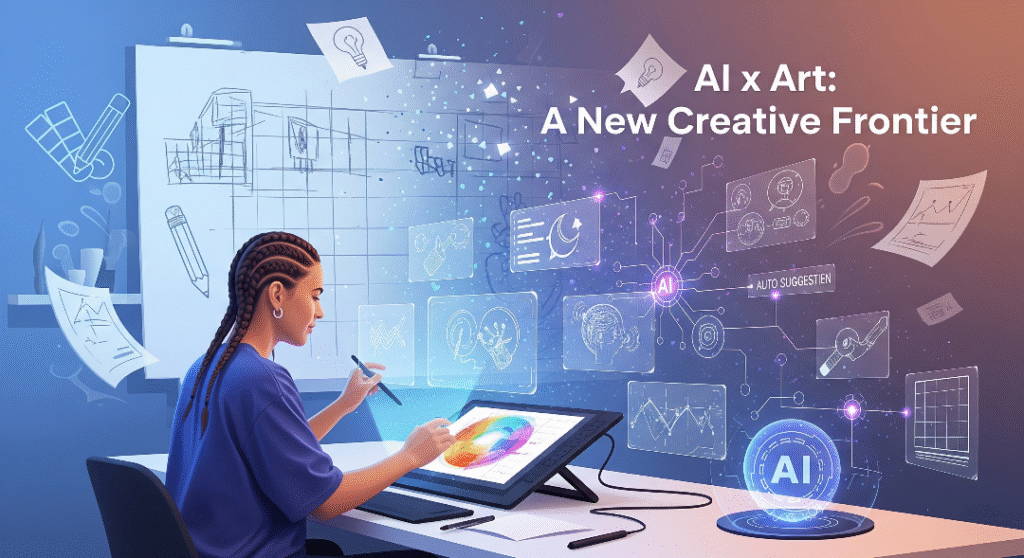Digital tools have fundamentally transformed how artists create. From early pixel art to today’s complex 3D models, technology consistently opens new doors. It has provided unprecedented freedom and powerful capabilities. Artists can now explore mediums and styles previously unimaginable. This continuous development is driving creative limits even further.
Now, artificial intelligence stands as the next major frontier. AI is not just about creating art; it is revolutionizing the entire artistic process. It offers new ways to brainstorm, refine, and even automate parts of our work. This collaboration between human and machine innovation offers thrilling opportunities. It is set to redefine what digital drawing truly means.
AI as a Creative Catalyst: Brainstorming & Concept Art
Starting a new project feels easier when fresh ideas are right at your fingertips. AI acts as a powerful brainstorming partner, sparking new concepts in seconds. It can rapidly generate diverse ideas for characters, environments, or objects. This saves artists valuable time. Instead of staring at a blank canvas, you get a head start.
Take concept art, for instance, AI tools can be incredibly helpful in bringing early ideas to life.
- ➫ They help in quickly producing multiple variations of a single theme.
- ➫ Artists can feed simple prompts to get unique visual interpretations.
- ➫ This feature is perfect for building expansive mood boards instantly.
- ➫ These mood boards provide a rich visual library to draw inspiration from.
- ➫ It significantly speeds up the initial conceptual phase of any art project.
This partnership helps artists overcome creative blocks. It also allows them to explore more avenues than ever before. This truly boosts an artist’s productivity and imagination.
Refining Your Vision: AI-Assisted Drawing Techniques
AI is also enhancing the precision and quality of digital artwork. These days, there are plenty of smart tools that help make your drawing process smoother and more precise. They help achieve a polished look with greater ease. These tools go beyond basic functions, offering sophisticated assistance.
Consider techniques like grid drawing technique, which traditionally aids in accuracy. Now, AI-assisted features can offer even more precise guidance. They help with line stabilization, ensuring smoother strokes. Complex tasks like perspective correction become simpler. Automated shading tools can add depth and realism quickly. Artists can focus more on artistic expression. Furthermore, AI can suggest harmonious color palettes. It can even generate intricate textures instantly. This removes much of the manual effort. As a result, artists spend less time on tedious corrections. They can dedicate more energy to their core artistic vision. This leads to higher quality artwork produced more efficiently.
Efficiency & Automation: Freeing Up Your Creative Energy
One of the best things about AI is how it simplifies and speeds up creative workflows. It automates many repetitive or time-consuming tasks. That means artists can save their energy for what truly matters: being creative. Think about the hours spent on tedious manual work. AI can now handle much of this.
For example, AI can help with:
- ➫ Automatically selecting complex areas in an image.
- ➫ Generating consistent patterns with a few clicks.
- ➫ Even animating basic elements or transitions.
These capabilities significantly accelerate the production process. Artists no longer need to spend countless hours on routine operations. Instead, they can focus on the bigger picture. They can dedicate their time to high-level creative decisions. This shift allows for more experimentation. It enables deeper artistic exploration. Ultimately, it means artists can create more impactful work.
The Human Element Remains Supreme
Despite AI’s amazing capabilities, it is crucial to remember its role. AI is a helpful tool, but it can never take the place of human creativity. The unique artistic vision of a human remains paramount. It is the artist who imbues a piece with emotion, narrative, and personal style. AI cannot replicate genuine human expression.
The depth of feeling, the subtle storytelling, these are uniquely human traits. AI can assist in the execution. However, the soul of the artwork stems from the artist. Consider photo to sketch conversion, for instance. AI can flawlessly transform an image. Yet, the artist’s eye decides which photos to convert. They choose how to refine the output. They add the personal touches that make it art. AI acts as a powerful assistant. It amplifies the artist’s abilities. It does not dictate creativity. The final piece is always a testament to the artist’s unique perspective.
Looking Ahead: The Collaborative Future of Art
The future of digital art is undoubtedly collaborative. It will involve artists working hand-in-hand with intelligent tools. This partnership will push creative boundaries further than ever before. New technologies will continue to emerge. They will offer even more innovative ways to create. Artists who welcome these new tools will discover fresh ways to express their ideas. They will discover fresh ways to bring their visions to life.
This exciting era promises unprecedented opportunities. For artists seeking a drawing app that champions precision and creative exploration, consider tools designed with both foundational skills and modern advancements in mind. GridSketcher, for instance, helps sharpen lines and support accurate composition. It provides a solid foundation while allowing for experimentation with evolving digital workflows. This blend of reliability and innovation supports artists on their journey. It helps them master both classic methods and new technologies.


